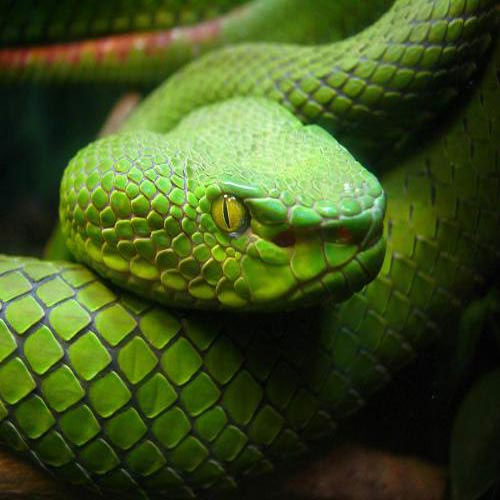The sixth sense of animals
Not only people but also animals possess their sixth sense, allowing them to enjoy the world in a way that is hard to imagine.

Spiders have a special mechanical sensing body. This organ allows them to feel the mechanical strain on their bones. Thanks to this sixth sense, spiders can assess the size, weight and even the prey that fell into their trap, the difference in insect movement and wind.

The comb jellyfish has a 'specialized' balanced receptor, allowing them to navigate in the ocean's currents. Because there is no central nervous system, they use this organ to coordinate with the movement of cilia to get food into the body.

Viper snakes are identified by deep cavities between the nostrils and eyes. This is the temperature sensing body, allowing snakes to see prey in the darkness with infrared rays. This sensation is sensitive to solid levels that can accurately assess the distance and size of prey, although other organs do not work.

The dove is one of the species that has the best ability to format the Earth's magnetic field among birds. This is due to the magnetic receptor, which consists of hard structures on the mine, arranged in the form of three-dimensional space.

The dolphin has the sixth sense of feeling of echo. Because the sound of underwater transmissions is better in the air, dolphins are capable of creating a three-dimensional image of the surroundings completely based on sound waves, like a sonar device.

Sharks have the ability to sense electrodes well. In fact, the hammer head is an appropriate shape for the shark's ability to sense electricity. Salt water is a very good medium for electricity, so sharks, thanks to this sense, can easily track their prey.

Salmon can be found to spawn in the right river where they were born, despite having to travel a great distance. While it is still a mystery, many scientists believe that salmon can contain ferromagnetic minerals to feel the Earth's magnetic field. They can also feel the difference between the smell of the river where it was born and other rivers.

Weather fish have a great ability to sense pressure changes. They use this sense to monitor the buoyancy and adjust the bubble. This sense allows fish to 'predict' the weather.

Platypus also have electric receptors like sharks. They use subcutaneous organs on this mine to find electric fields, which are emitted when their prey shrinks. The platypus moves from one side to the other to enhance this sense.

Sea turtles are similar to salmon, love to return to nest at the beach I was born. By doing this, sea turtles also possess the receptor of the Earth's magnetic field.
- Decoding the sixth senses of animals
- The sixth sense was very popular
- The sixth Sense
- Detection of '6th sense' in mice
- Does echolocation have human sixth sense?
- Cats and dogs have a 6th sense
- The truth about the sixth sense of humanity
- Escape death through my hunch
- Evidence of the 6th sense in humans
- New solution to the mystery of '6th sense'
- The 'sixth sense' of the brain detects calories
- Show the device to help people with super sixth sense
 The 11 most unique public toilets in the world
The 11 most unique public toilets in the world Explore the ghost town in Namibia
Explore the ghost town in Namibia Rare historical moments are 'colored', giving us a clearer view of the past
Rare historical moments are 'colored', giving us a clearer view of the past The world famous ghost ship
The world famous ghost ship